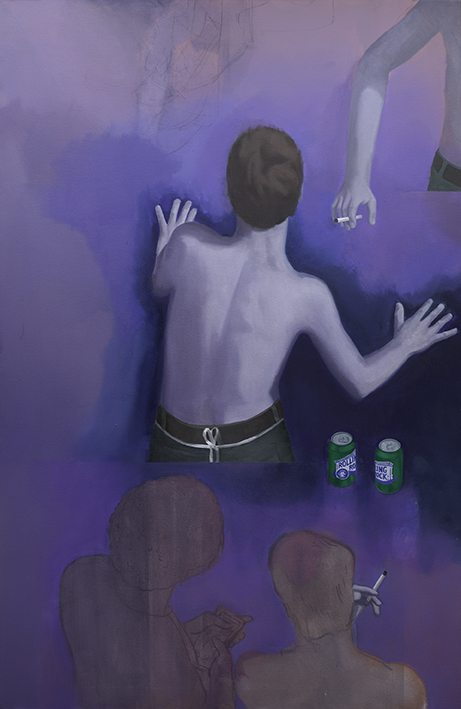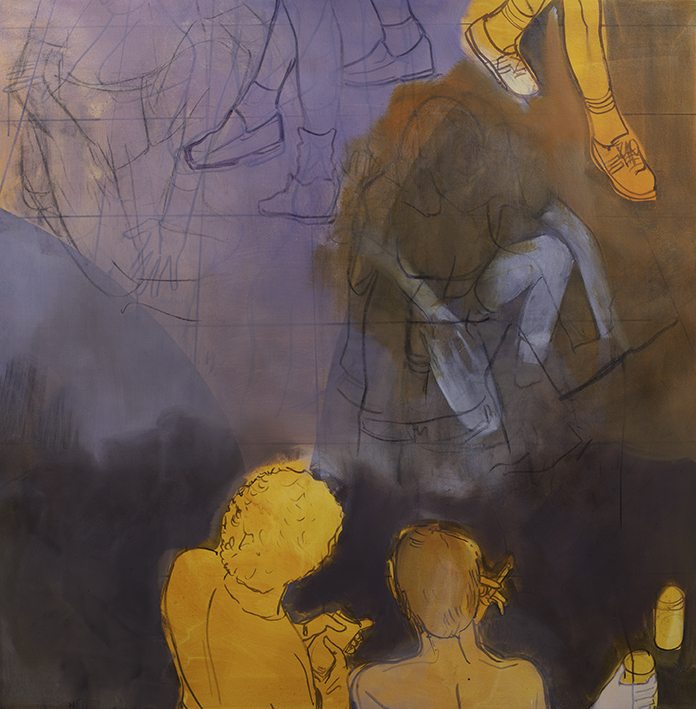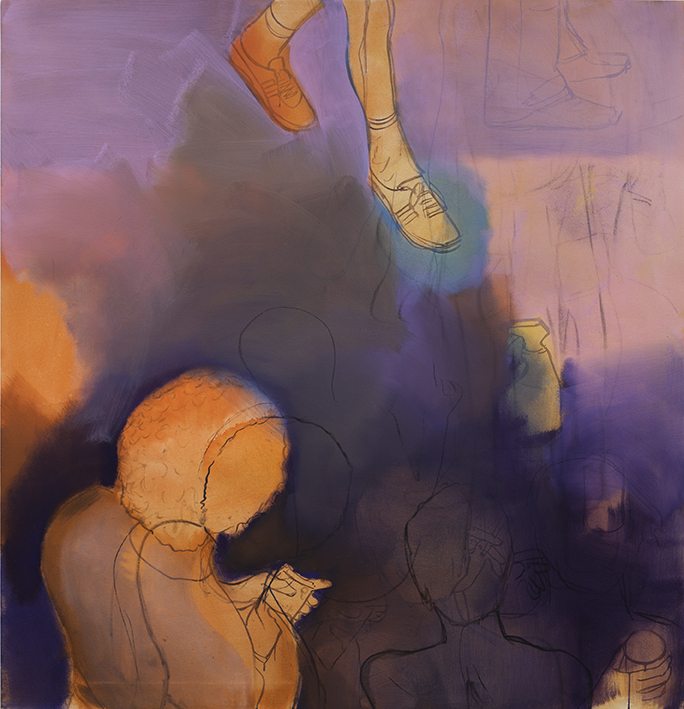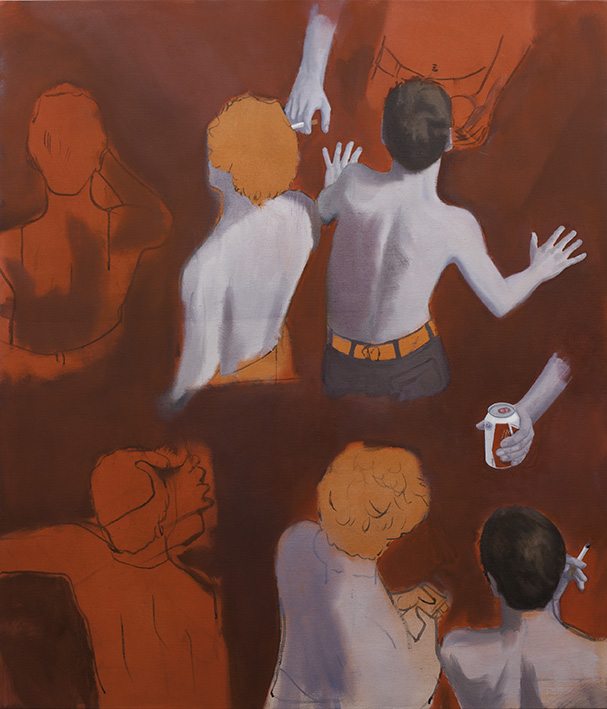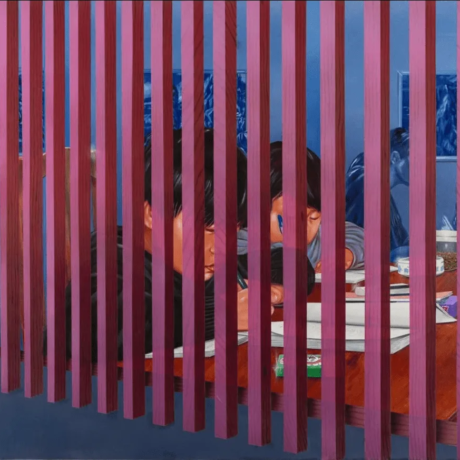People absorbed in enraptured, ecstatic movements, surrounded by more sedate, lingering figures regularly inhabit Thomas Eggerer’s paintings, suggesting feelings of awkwardness, or loneliness when in the midst of social groups. Although grounded in a very commonplace occurrence, these are dreamlike works, provoking feelings of pleasing voyeurism and pressing claustrophobia. Eggerer tries to address the vulnerability of the figures in his paintings, and this, he says, is only possible through rendering his images as “virtual, or dreamlike spaces”.
If you walk through the works progressively in Ozone, it seems that Eggerer has painted a series of developing scenes. Appearing again and again are (what seem to be) the same arms, feet, hands and bodies. A nebulous glow is repeated, providing cover for pre-cautious feet, which hover at the upper edges of the scenes. Also reoccurring is a larger, central figure, who has his back to the viewer, standing splay-armed in surprise or ecstasy.
Whilst the uneasy placement of an ambiguous figure is a constant device in Eggerer’s oeuvre, the German artist’s work seemed suited to this colourful gathering. In his canvasses, the placement of a figure almost always seems to allegorise a disconcerting kind of social alienation. Yet Eggerer chooses to temper this experience with his use of colour, space and washy brushstrokes: “I want to go with that optimism. I want to make something beautiful.”
Thomas Eggerer, Ozone is showing at Maureen Paley until 23 August.
